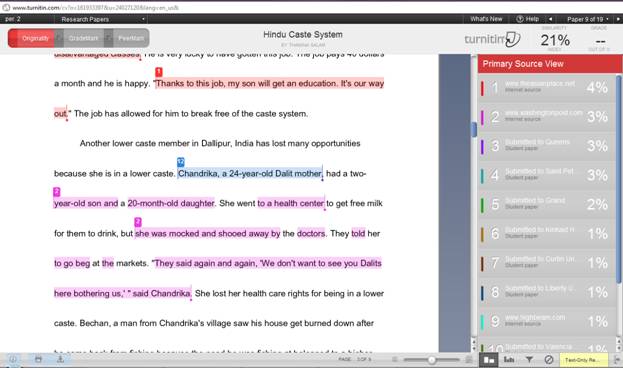Avoiding Plagiarism using Turnitin
Pamela AuCoin
Avoiding plagiarism for our students can be tricky, especially in the age of cutting and pasting. Luckily, the same tool which makes plagiarism so easy for students, can also help them, and their teachers, detect it in an efficient manner.
There are many strategies. As a teacher, I have googled suspiciously sophisticated phrases; there are also many kinds of software that exists solely for this purpose. This is effective for the teacher, but not useful as a preventative tool. How can students avoid plagiarism in the first place?
I find turnitin.com to be invaluable. While it is not free, I find that it is helpful on so many levels, that it is worth recommending. Students download their papers, and can click on an originality tab, which provides them with a percentage mark, indicating how original their work is. Naturally, teachers have access to the same information -- but what is important, is that students are able to catch any potential errors before the final submission. This empowers students to avoid any unpleasant surprises, come grading time.
Turnitin.com is not a free service; luckily, my principal got a school-wide account. Teachers can also elect to get their own accounts for their students.

Directions:
- Get an account. Go to turnitin.com for details.
- Create your classes, then your assignments.
- Create a peer review assignment. This allows students to review their work, before the final submission.
- Provide students with their class codes, so they can create their own accounts.
- If you have smartboard, or projector and whiteboard, I recommend playing the demo for your classes. From this page: http://www.turnitin.com/static/index.php, just click on “View Demo.”
- Students can upload their own papers. Once their papers are uploaded, they can click on the originality tab, which rates the originality of their work.
Writing research papers can be an intimidating process for students. Turnitin demystifies plagiarism, and gives them the chance to provide citations and revise their work before final submission. Turnitin.com also facilitates peer reviewing, and provides an excellent interface for teachers to provide comments and feedback.
Do
you have a comment or suggestion? E-mail
Pamela
|